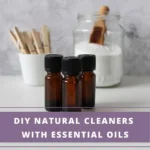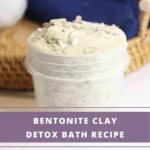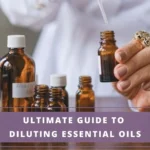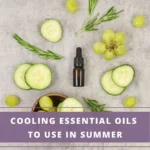 Why Container Gardening?
Why Container Gardening?
As an Amazon Associate I earn from qualifying purchases. See Full Disclosure Here
Container gardening has so many benefits, it’s hard to believe more people aren’t doing it. Although it has become more popular over the past couple of decades, it still isn’t as popular as many other methods.
One of the biggest benefits of growing your plants in containers is the fact that it makes gardening accessible to almost anyone. Handicapped individuals find growing their plants in containers makes it easier to locate plants where they can easily reach them.
Many people in wheelchairs like to place their pots on a low table to make them more accessible. Elderly people who can’t work traditional gardens may find container gardening to be an excellent way to once again enjoy their favorite hobby.
Even children find container gardening to be much easier than traditional gardening, because they don’t have to weed and rake and hoe, and they don’t have to have an adult till soil for them.
Another major benefit of container gardening is the ability to move plants if you need to.
If you’re growing your plants outdoors and bad weather comes, you can bring your plants inside where they’ll be safe. If you plan your garden poorly and your plants are getting too little sun or too much, you can easily move their containers to a better location. And you can even move your plants on a whim if you decide they’d look better elsewhere.
Plants grown in containers don’t have the same issues with diseases that traditionally-grown plants have. Although some container-grown plants do get diseases, it is far less likely than it would be if those plants were grown directly in the soil. Potting soil is generally free of disease-causing organisms, so your plants will be safer.
Keeping your plants well-fed is also easier when they’re grown in containers. It’s much easier to ensure the fertilizer you use gets to your plants if they’re confined to a small area of soil. When you fertilize plants that are growing directly in the soil, the fertilizer may drain away or be absorbed by other nearby plants. This is not as likely when plants are grown in containers.
Of course, when the soil area is relatively small, there is a chance the fertilizer can be washed out of the soil faster. Because of this, you do often need to fertilize more often than you would a traditional garden.
But you can rest assured that your plants are probably getting more of the fertilizer before it does wash away than they would probably get if they were in the ground. When you grow your plants in containers, you’ll also be able to extend their growing season.
By carefully insulating pots by wrapping them in blankets or other insulating materials, you can keep their soil warmer than the ground soil. You can start your plants early indoors or in a cold frame, then you can easily move them to larger pots outdoors when the time is right.
You can also use careful insulation to continue to grow plants after the first frost, and you can even bring plants indoors once it becomes too cold to keep them outside even when insulated. Saving space is another great benefit of container gardening.
Many people live in apartments or in homes with very little yard space. Container gardening allows you to have a garden on a porch or patio, or even indoors. Many people have small container gardens in a sunny windowsill in their kitchen, or in a sunroom or spare bedroom.
Some people even grow plants in a closet by using a grow light! Growing plants in pots really makes it easy to have a garden when you don’t have the space for a traditional one!
Planning Your Container Garden
The first thing you need to decide when planning a container garden is whether you’d prefer to grow your plants indoors or outdoors. A lot of people think container gardening is only for indoor growing and patios, but containers can actually be useful for any garden situation.
Containers are great for growing almost any type of plant, because they offer great versatility. If you plant your garden in containers and you need to move it later, it’s easy to do it. Not so if you have a traditional garden!
If you’re expecting very bad weather, you can temporarily move containers to a safer location, like indoors or into a garage or basement. But there isn’t much you can do for a traditional garden.
If you find your plants aren’t doing well because the space you chose is too sunny or too shady, there isn’t much you can do with a traditional garden, but you can easily move potted plants to a better location.
If you choose to have your container garden outdoors, you need to be sure to choose a good location for it. You’ll want to choose a place that has the proper amount of sun for the plants you wish to grow, but it also needs to be a place that’s very accessible. It’s easy to lose motivation to work on your garden if it’s several hundred yards away from the house!
Be sure to locate your plants as far away from streets as you can. Pollution from cars, as well as the dust they kick up, can damage your plants and contaminate them. You don’t want to be eating all of that pollution, so locate plants as far away from those roads as possible.
If you have your plants indoors, you’ll need to be sure to select a very good spot. Most plants need to be fairly warm, so you’ll need to choose the warmest spot in your house if you use air conditioning.
Many plants won’t do well in very chilly homes, so you might need to choose a room for your plants and keep the vent closed in that room so it stays warmer there. If you can, choose a sunny room with a lot of natural sunlight.
Plants thrive best with natural light. If you don’t have a room with a lot of sunlight, you’ll have to use special plant lights for your plants. You can’t use just any fluorescent lights, because plants won’t thrive.
You need to use lights that are specially designed for growing plants. They contain a broad spectrum of light, which is closer to natural light than standard bulbs. You may also have to adjust the humidity in the room with your plants.
Some plants thrive better in higher humidity, and others do well in lower humidity. You may need to invest in special equipment to adjust the humidity if you’re raising very delicate or picky plants. You probably won’t have to do this unless you’re growing exotic varieties.
Next, you’ll need to choose which plants you want to grow. Be careful! Too many people choose to plant far too many varieties, and end up frustrated. Don’t grow anything you can easily pick up cheaply at the grocery store!
Stick to growing fruits and vegetables that you really enjoy and have a hard time locating locally, or those you find too expensive or too low quality. Tomatoes are a favorite for home gardeners, because their quality in stores if often very poor.
Finally, decide whether or not you want to grow your plants organically. If you’re growing indoors, this will probably be very simple to do. But if you’re growing your plants outside, you may find the frustration of dealing with pests is just too much for you. Don’t feel guilty if you find organic gardening too difficult. You can always try it after you have more experience.
Choosing Containers for Your Container Garden
Choosing the right container for a particular type of plant is critical to its success. If you choose the wrong size pot, it could seriously stunt the growth of the plant. You need to choose the right size of pot, but it’s almost as important to choose a container that’s made of the right material. Different materials will work better in different situations.
If you’re planning to grow a perennial plant, like a large herb bush, you might want to choose a large wooden container. Wood is especially attractive for use in growing plants that will continue growing for more than one season, and plants that you intend to grow outdoors in a conspicuous location.
Wooden containers are best for larger plants, and for use in highly visible areas of your yard. Wooden pots are generally one of the most expensive types of containers. Wooden pots may be expensive, but they’re generally extremely durable.
Be sure to get one that’s treated on the outside, but not on the inside. If you get a pot that’s treated on the inside, you might end up with dangerous chemicals being leeched into the soil and making their way into your plants. This can damage the plants, and potentially make you sick if you eat them.
Plastic pots are probably the most widely used type of pot for container gardening. This is largely due to the fact that plastic pots are generally the cheapest. But cheaper isn’t always better.
If you only plant to attempt container gardening for one year, then plastic may be a very good option for you. But if you think you might want to have a container garden next year, you might want to stick with something a bit more durable.
You could be tempted to think certain plastic pots are durable because they’re harder or thicker than other plastic pots, but that’s not necessarily true. If plastic is left outdoors in the elements for too long, it can start to warp and crack. Cracked pots are of little use for anything!
Terra cotta clay pots are the second most economical type of container. They’re pretty cheap, but they are very delicate and do break quite easily. They also don’t stand up very well to freezing temperatures, so you shouldn’t leave them out during the winter.
Fired ceramic pots are a pretty good choice. They can be a bit delicate, but many of them are pretty durable. They’re usually glazed on the outside for appearance, but are left unglazed on the inside. This is good since the glaze can damage plants if it leeches into the soil.
You can also make your own containers by using things you find around the house. Most cheap plastic containers can work if they’re large enough for whatever you want to grow, as long as you cut drainage holes in the bottom.
Some good example you can try are milk jugs and soda bottles with the tops cut off and holes cut in the bottom, empty margarine tubs, trash cans with holes cut in the bottom, and large plastic tubs with drainage holes drilled.
Some people even use bags of soil as their containers, simply cutting a hole in the side of a bag of soil that’s lying on its side and sowing seeds directly into the exposed soil! You don’t have to use standard purchased containers. Almost any container can be used for growing plants as long as it is safe and allows the plants adequate drainage.
Choosing Plants for Your Container Garden
Most people choose to grow edible plants in their container gardens, because they don’t think of flowers or houseplants as being the same thing as container gardening. While it is the same basic principle, it’s not generally classified the same way.
Most people just think the term container gardening refers to growing edible plants, so that’s what we’ll focus on here. You can grow many types of vegetables and herbs in containers, and a few types of fruit.
Herbs are the most commonly grown edible plant for containers. Vegetables come in second, and fruit isn’t grown in containers as often – probably because a lot of people think it would be too difficult to grow fruit in containers.
Strawberries are one fruit that grows particularly well in many types of containers. Strawberries are generally quite hardy, and can even be grown in special grow bags that can be hung on a wall outdoors.
Dwarf fruit trees can often be grown in large pots. Many smaller dwarf citrus trees grow nicely in pots, and if kept well-pruned they can make beautiful indoor decorations. Many types of dwarf berry bushes will grow in containers, although they are usually very heavy and can’t be moved easily. Dwarf varieties of blueberries and raspberries have been successfully grown in containers.
Many varieties of herbs do well in containers. Parsley is perhaps the most popular herb for container growing. Basil and chives are also extremely popular for growing in containers. Cilantro can be grown successfully in containers.
In fact, almost all herbs can be grown successfully in containers. The key is finding a large enough container. Some herbs can easily be grown in relatively small containers. Chives, parsley, and basil can all grow in smaller pots.
But some plants grow a bit larger. Sage, for example, is a bush. It needs a pretty big pot. Oregano also grows rather large, and needs a large container. Although technically a fruit, tomatoes are probably the most popular “vegetable” for home gardeners in general.
Container gardeners are no exception, and they plant tomatoes in droves. It’s probably due mostly to the fact that good tomatoes can be very difficult to find. The tomatoes in most grocery stores are picked green and artificially ripened so they survive shipping without bruising and last longer on the shelves.
Most tomato varieties can be grown very well in containers, especially cherry tomatoes, grape tomatoes, roma tomatoes, and small salad tomatoes. Other plants that are commonly grown in containers include lettuce and other salad greens, cucumbers, squashes, many types of beans and peas, radishes, carrots, scallions, all types of peppers, and even corn and potatoes.
Most vegetables can be grown in containers if you use the proper procedure. You can easily grow most of your plants from seeds. If you’re growing plants indoors, you can sow directly into the pot if you like, but you can risk damaging delicate seedlings during thinning.
You should probably grow most of your plants from seedlings that you purchase locally, but you can also start your own seedlings indoors in smaller pots, and then transplant them into larger pots later. It’s easier to start plants from seedlings when you can, but you may find a lot of satisfaction in starting your own.









